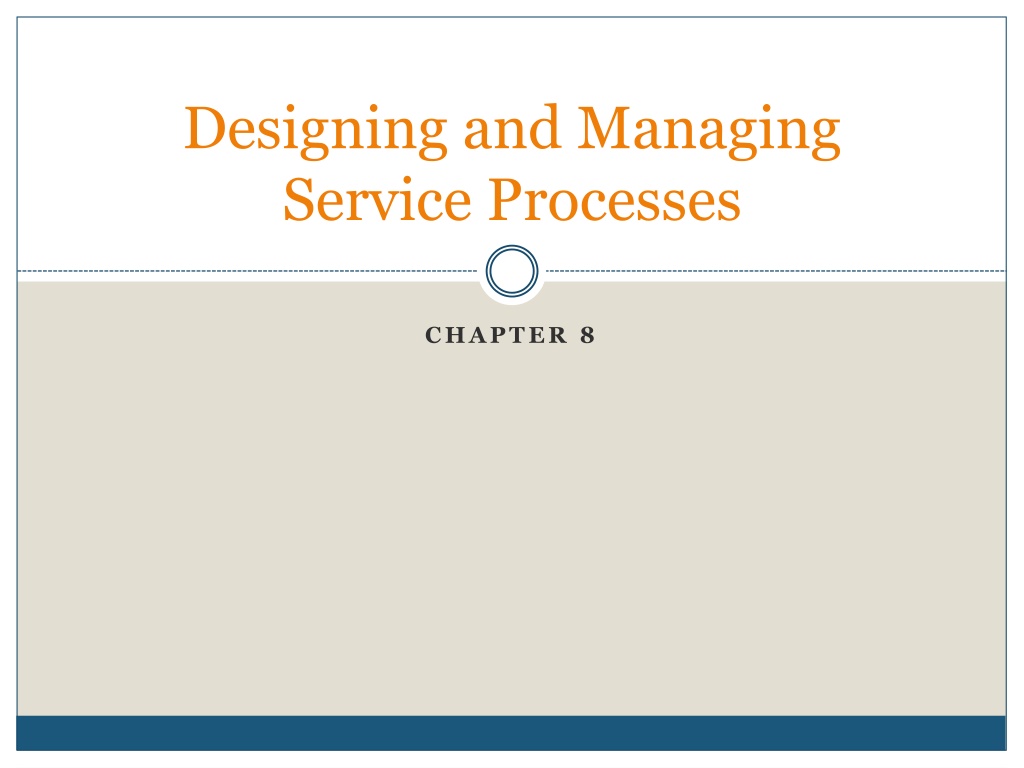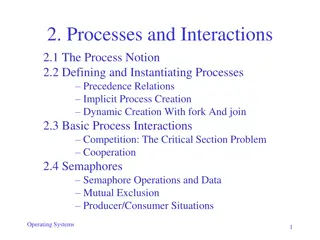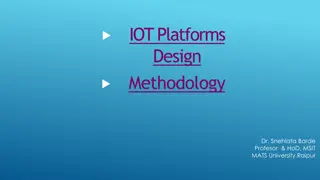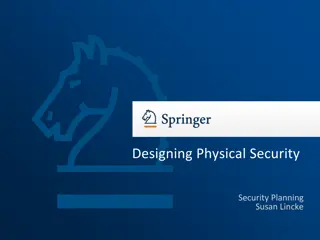
Service Process Design and Management Insights
Gain insights into service processes with chapters covering flowcharting service delivery, people processing service, possession processing service, mental stimulus processing service, information processing service, service blueprinting, signage, and the benefits of service blueprinting. Understand how to depict service systems accurately, identify fail points, prepare contingency plans, and improve internal communication.
Download Presentation

Please find below an Image/Link to download the presentation.
The content on the website is provided AS IS for your information and personal use only. It may not be sold, licensed, or shared on other websites without obtaining consent from the author. If you encounter any issues during the download, it is possible that the publisher has removed the file from their server.
You are allowed to download the files provided on this website for personal or commercial use, subject to the condition that they are used lawfully. All files are the property of their respective owners.
The content on the website is provided AS IS for your information and personal use only. It may not be sold, licensed, or shared on other websites without obtaining consent from the author.
E N D
Presentation Transcript
Designing and Managing Service Processes CHAPTER 8
Flowcharting Service Delivery Technique for displaying the nature and sequence of the different steps in delivery service to customers Offers way to understand total customer service experience Shows how nature of customer involvement with service organizations varies by type of service: People processing Possession processing Mental Stimulus processing Information processing
Service Blueprinting A tool for simultaneously depicting the service process, the points of customer contact, and the evidence of service from the customer s point of view. Process Service Blueprint Points of contact Evidence
Service Blueprint What is it? A picture, guide or map that accurately portrays the service system. A service blueprint allows all parties in the service experience to accurately understand and deal with service situations
Benefits of Service Blueprinting Identifies fail points in the delivery of a service Take preventative measures Prepare contingency plans Facilitates a top down, bottom up approach Facilitates internal communication between departments and SBUs Helps to define customer and employee roles Identify potential areas of strength Identify bottlenecks.
Key Components of a Service Blueprint 1. Define standards for front-stage activities 2. Specify physical evidence 3. Identify main customer actions 4. Line of interaction (customers and front-stage personnel) 5. Front stage actions by customer-contact personnel 6. Line of visibility (between front stage and backstage) 7. Backstage actions by customer contact personnel 8. Support processes involving other service personnel 9. Support processes involving IT
Customers Role in Service Delivery
Levels of Customer Participation Low or minimal participation Consumer presence required during service delivery Moderate participation Consumer inputs required for service creation High involvement Consumer co-creates the service product
Customers as Service Co-creators Customers can be thought of as partial employees : Contributing effort, time, or other resources to the production process Customer inputs can affect organization s productivity and quality of service processes and outputs. How? For the relationship to last, both parties need to cooperate with each other Key issue: Should customers roles be expanded or reduced?
Discussion Question #8 PAGE 260
Customer Participation and Self-Service Technologies Proliferation of New SSTs Customer Usage of SSTs Success with SSTs
Discussion Question #9 PAGE 260
Self-Service Technologies Benefits SST machines are conveniently located and accessible 24/7 often as close as nearest computer! Obtaining detailed information and completing transactions can be done faster than through face-to-face or telephone contact People in awe of what technology can do for them when it works well Drawbacks SSTs fail system is down, PIN numbers not accepted, etc Poorly designed technologies that make service processes difficult to understand and use they mess up - forgetting passwords; failing to provide information as requested; simply hitting wrong buttons
Customers as Contributors to Service Quality and Satisfaction Customers can contribute to: their own satisfaction with the service by performing their role(s) effectively by working with the service provider the quality of the service they receive by asking questions by taking responsibility for their own satisfaction by complaining when there is a service failure
Importance of Other (Fellow) Customers in Service Delivery Other customers can detract from satisfaction: disruptive behaviours overly demanding behaviours excessive crowding incompatible needs Other customers can enhance satisfaction: mere presence socialization/friendships roles: assistants, teachers, supporters, mentors
Strategies for Enhancing Customer Participation Figure 13.3






















